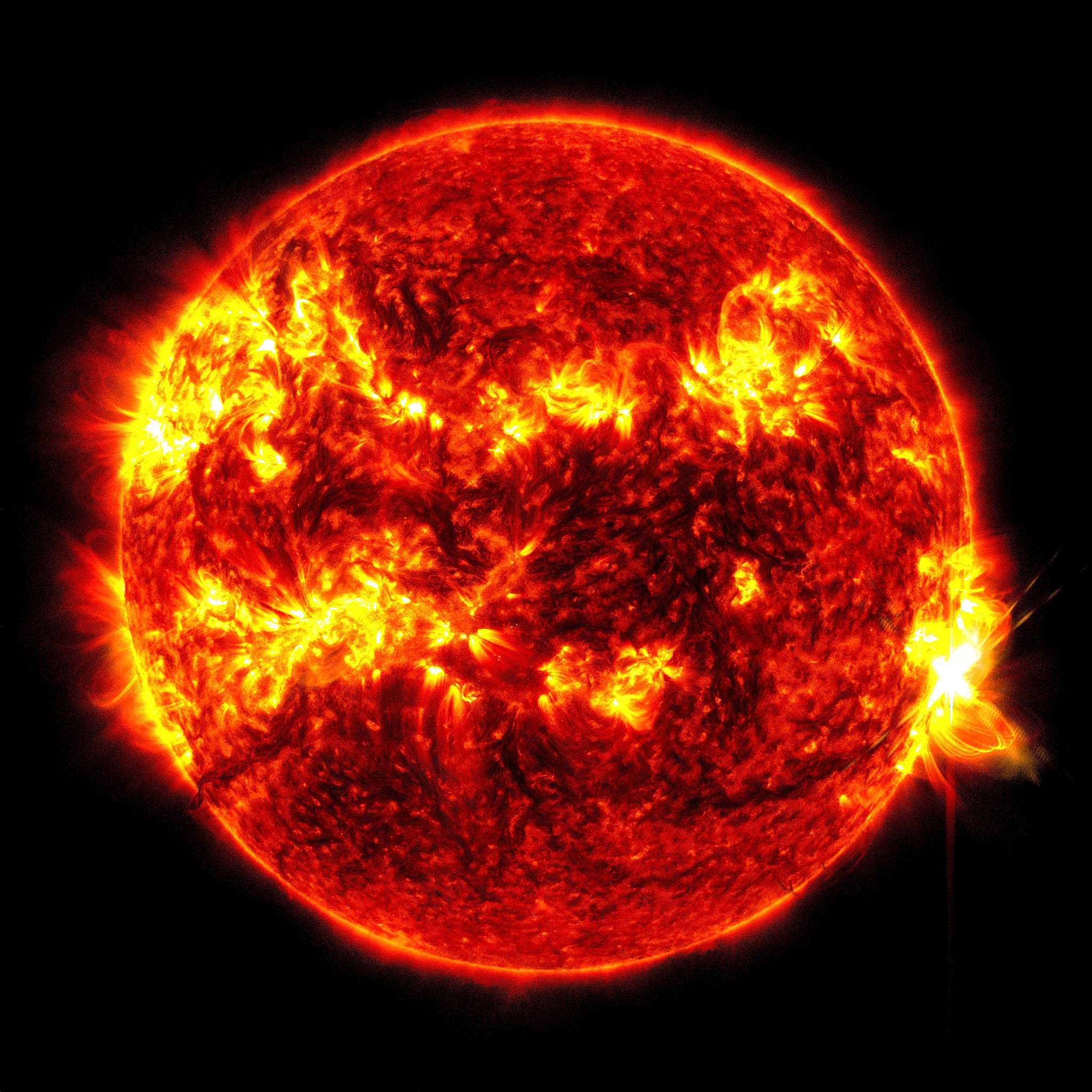
The biggest solar flare in 10 years hits Earth in May.?(PHOTO: VCG)
By?ZONG?Shihan
Since May, the Sun's activities have been increasing, with 10 X-class flares and over 60 M-class flares occurring in just one week. What are solar flares? Why have solar flares become so frequent this year? What impact do they have on our lives?
A solar flare is an intense burst of electromagnetic radiation which occurs when the magnetic energy in the Sun's atmosphere is suddenly released. Solar flares typically occur on the surface of the Sun, and are often, but not always, accompanied by solar magnetic storms (also known as coronal mass ejections), solar particle events (also known as solar radiation storms), and other eruptive solar phenomena.
Although solar flares can last from minutes to hours, the energy they release is equivalent to the total energy of 100,000 or even a million powerful volcanic eruptions. Depending on the magnitude of energy released, they are classified into five levels: A, B, C, M, and X.
X-class flares, the most powerful ones, can interfere with the ionization of the upper atmosphere, affecting short-wave radio communication and posing a potential threat to the operation of space stations, space shuttles, and satellites.
Additionally, the electromagnetic radiation released by solar flares can potentially cause power failures and affect the accuracy of GPS positioning. On the bright side, they can also create beautiful auroras.
The Sun's activity follows a 11-year cycle approximately. We are currently in the active phase of the 25th cycle. Therefore, the frequent solar flares are a natural phenomenon.
Whether solar flares will have an impact on the human body depends on the position of the Sun's surface where they erupt and the magnitude of the eruption. However, the solar radiation energy that reaches the Earth is only a small fraction of the original flare, and the Earth's magnetic field helps block most of the high-energy particle streams brought by solar eruptions. The radiation that directly reaches the human body is minimal. Therefore, solar flares have almost no impact on human health.
The trio will conduct a series of experiments in fields such as life science, fluid physics, combustion science and materials science. Notably, this is the first time that fruit flies have been taken on a Chinese space mission as experimental subjects. What made scientists choose fruit flies? What experiment will they undergo?
